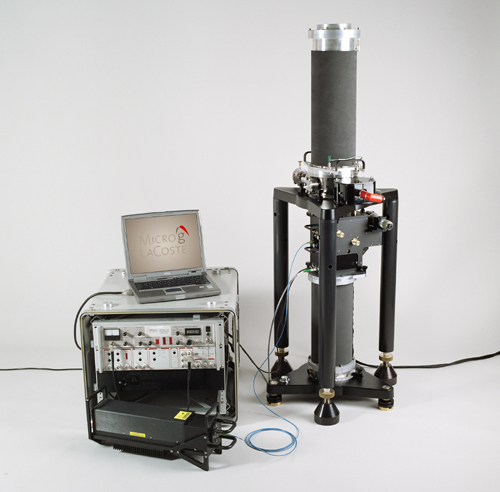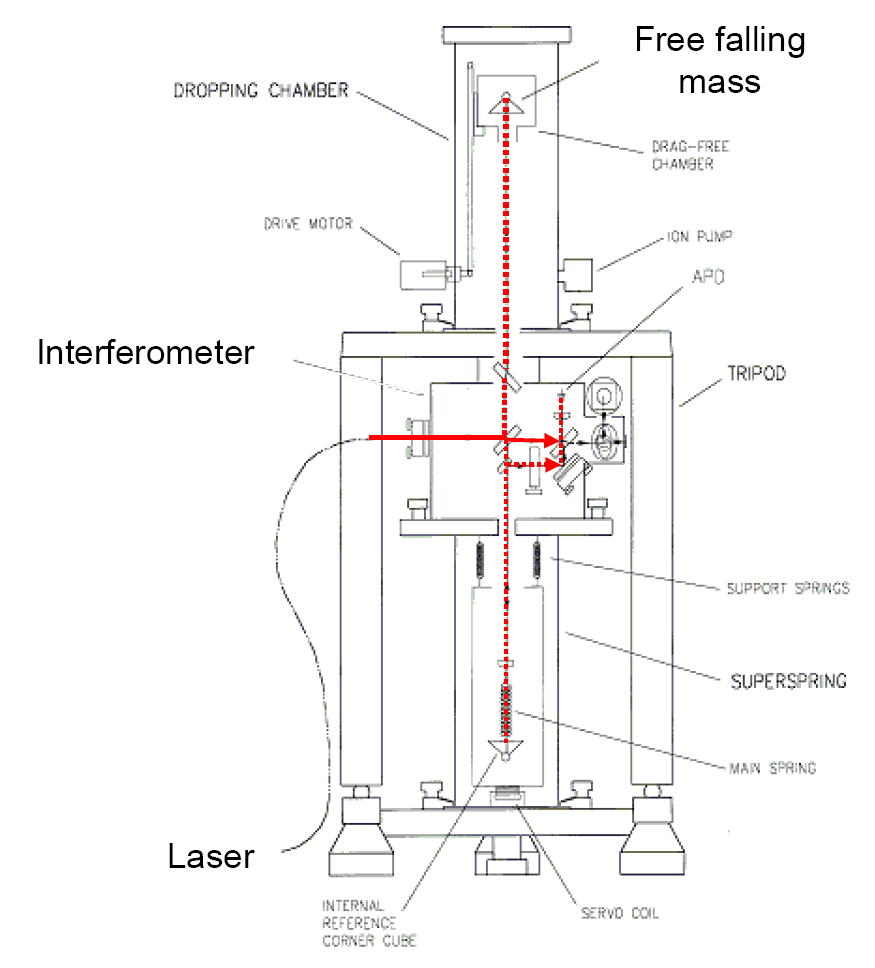| An FG5 manufactured by Micro'g LaCoste,
Boulder, Colorado |
Sketch showing the dropping chamber, the
"Superspring" suspension and the path of the laser. The
laser ray is reflected in the falling prism. An
interferometer produces a fast sequence of fringes that is
picked up by a photo detector. The superspring is a feedback
controlled spring that responds to frame accelerations as if
it were infinitely long. It thus counteracts the
microseismic noise and thus isolates the dropping chamber
mechanically from the monument. The prism that is dropped
sits inside a cage that follows the prism in the fall by
feedback control in order to avoid drag of the prism against
the little remainder of air in the vacuum chamber. When the
drop is completed, the cage is used to transport the prism
back to its upper position, ready for the next drop. It is
feasible to run a long series of drops at four or five
seconds interval.
|



